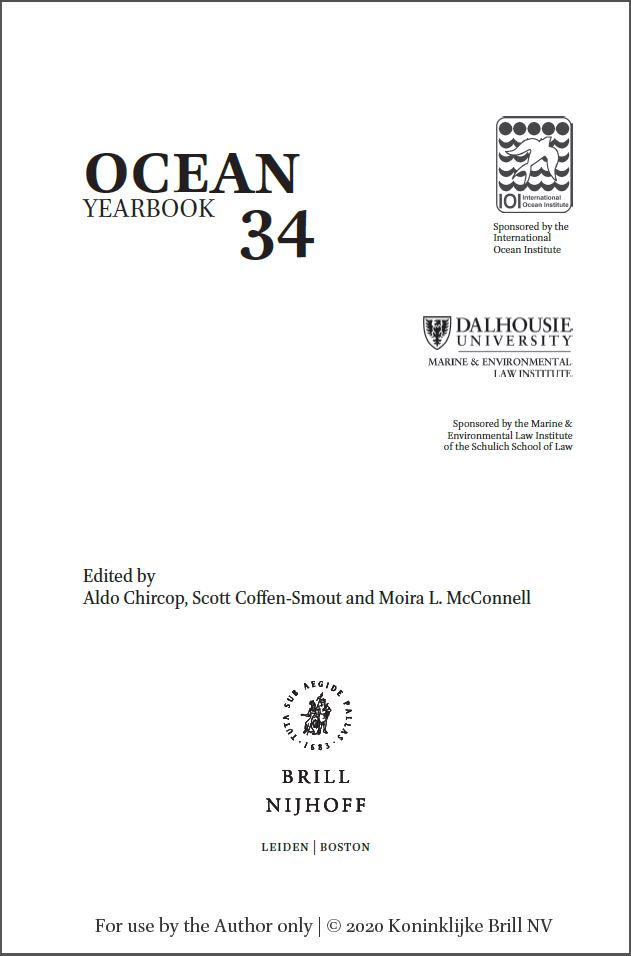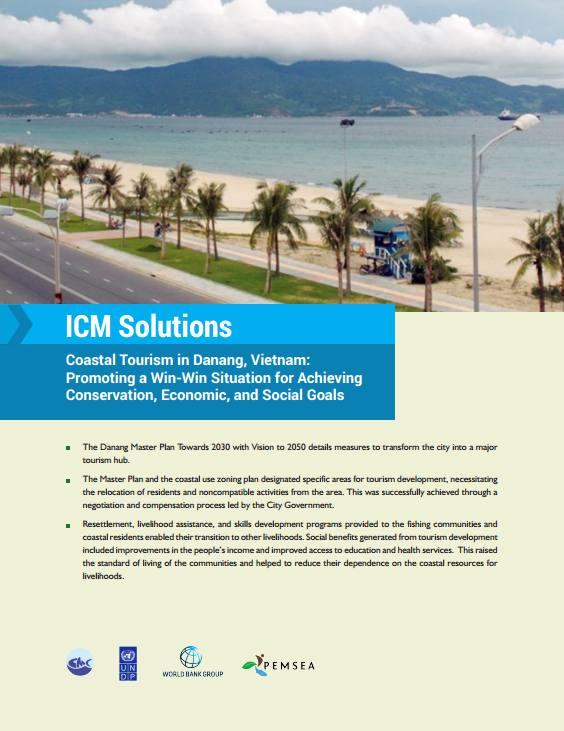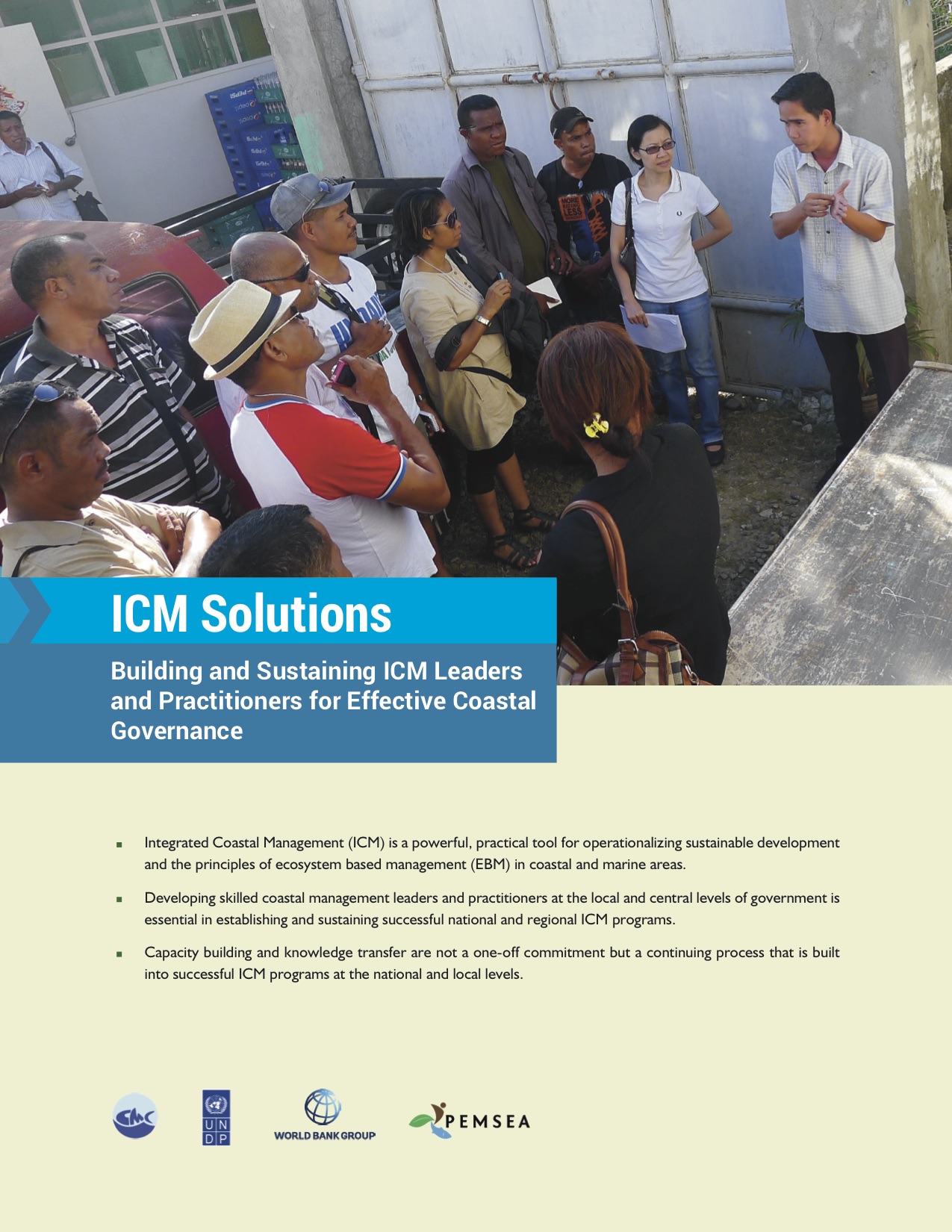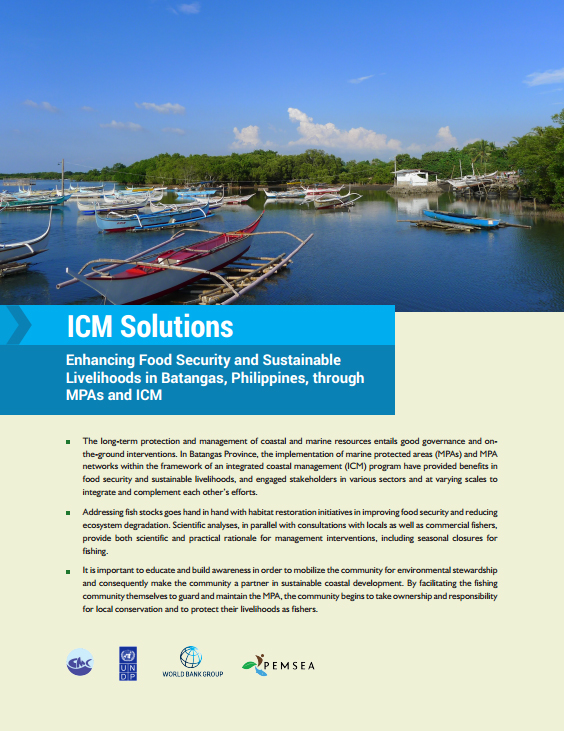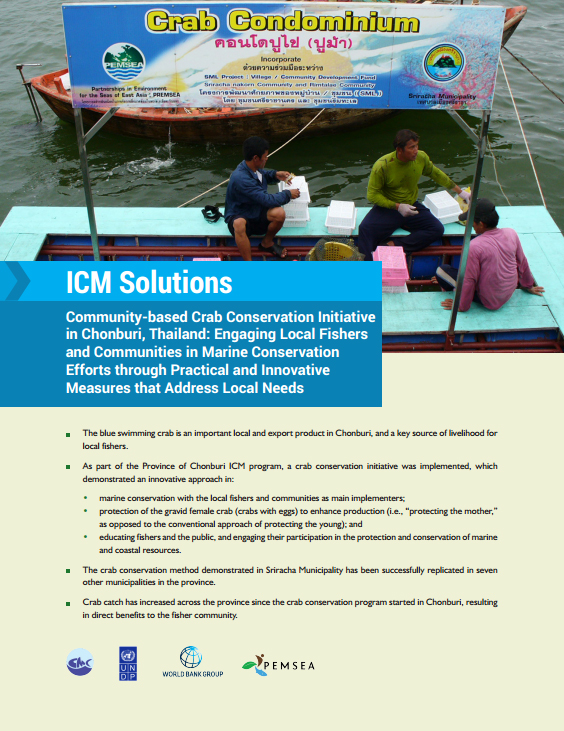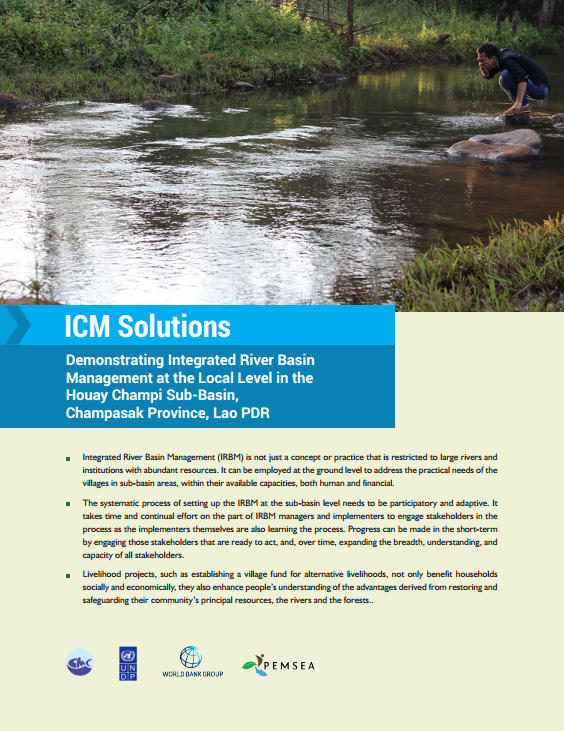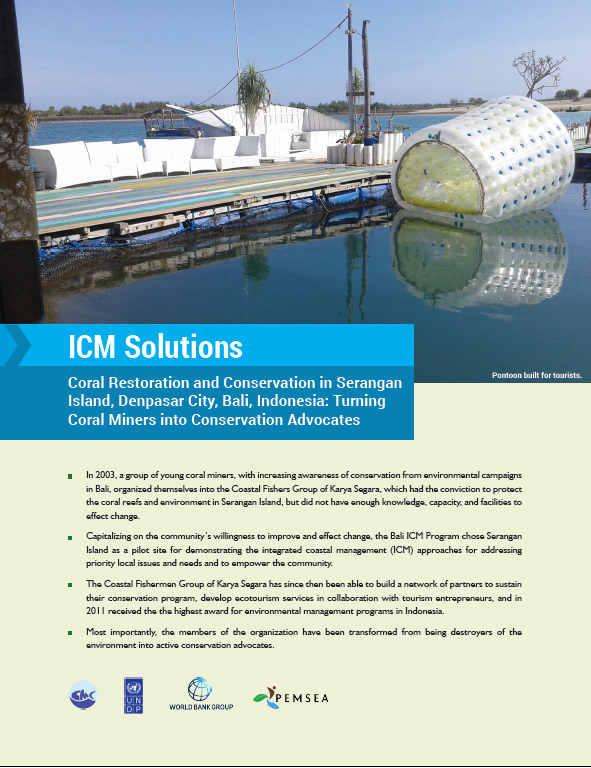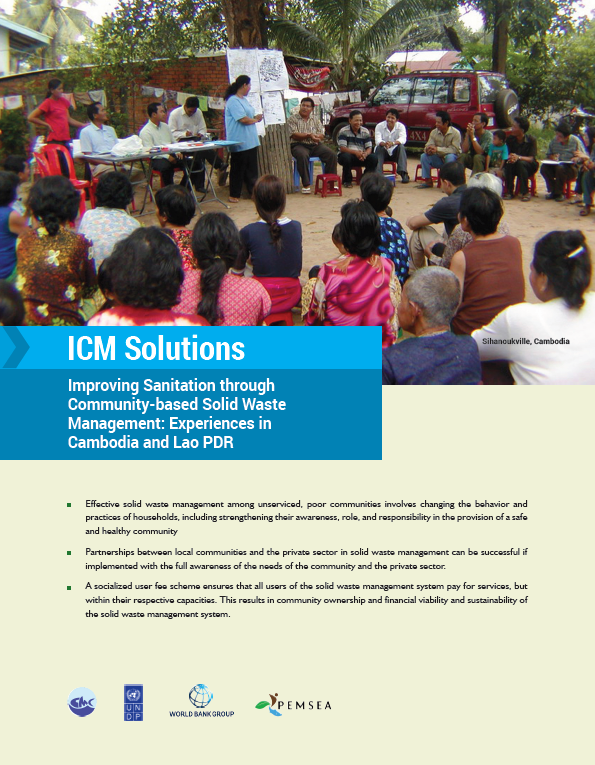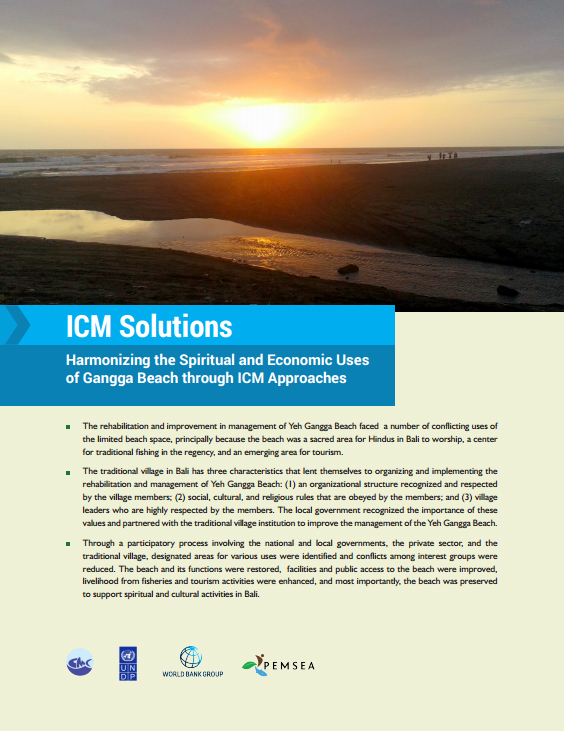
Breadcrumb
Ocean Yearbook 34
The recent publication "Local Contributions to Global Sustainable Development Agenda: Case Studies in Integrated Coastal Management in the East Asian Seas Region" is a milestone in dedicated regional efforts to developing, testing, and implementing integrated coastal management (ICM) in several countries of the East Asian Seas region (hereafter the EAS region).
Coastal Tourism in Danang, Vietnam: Promoting a Win-Win Situation for Achieving Conservation, Economic, and Social Goals
The districts of Ngu Hanh Son and Son Tra in Danang, Vietnam, are endowed with rich coastal and marine resources that offer huge tourism potential. The rapid growth of coastal tourism along the coasts of these districts resulted in increased solid waste generation, sewage discharges and beach erosion. Public security at swimming beaches and seafood safety were also issues of high concern.
Print version is available for FREE. Pay only for the shipping cost.
Building and Sustaining ICM Leaders and Practitioners for Effective Coastal Governance
Coastal and marine ecosystems are extremely complex, highly diverse, and complicated systems. They are home to various species and habitats that provide a wide variety of products and services to coastal communities and society in general. Various economic activities take place in the coastal area including aquaculture and coastal fisheries, tourism and marine transportation of goods, among others. With such competing demands, local leaders oftentimes face difficulty in making decisions that will strike a balance between protecting the functional integrity of natural resource systems while allowing economic development to progress.
Print version is available for FREE. Pay only for the shipping cost.
Enhancing Food Security and Sustainable Livelihoods in Batangas, Philippines, through MPAs and ICM
The long-term protection and management of coastal and marine resources entails good governance and on-the-ground interventions. In Batangas Province, the implementation of marine protected areas (MPAs) and MPA networks within the framework of an integrated coastal management (ICM) program have provided benefits in food security and sustainable livelihoods, and engaged stakeholders in various sectors and at varying scales to integrate and complement each other’s efforts.
Print version is available for FREE. Pay only for the shipping cost.
Community-based Crab Conservation Initiative in Chonburi, Thailand: Engaging Local Fishers and Communities in Marine Conservation Efforts through Practical and Innovative Measures that Address Local Needs
The blue swimming crab (Portunus pelagicus) is among the important local and export commodities in Chonburi. It is a national delicacy that is in high demand among locals as well as tourists. In 1998, the harvest of blue swimming crabs from the Gulf of Thailand reached a peak of 37,281 tons, from 18,708 tons in 1985. Harvest of blue swimming crabs continuously declined after the late 1990s to 15,132 tons in 2009. The decline was associated with overharvesting, of both the gravid (pregnant) crabs and young crabs, as well as environmental degradation arising from the coastal developments. Local fishers and commercial operators, including those from Chonburi Province, were using collapsible bottom traps and floating seines, which captured the mature and gravid crabs, and the young ones as well. Some of the fishers relied primarily on the crab harvest as their source of livelihood. The significant decrease in the population of the blue swimming crabs affected the income of local fishers and threatened loss of their livelihood. In addition, the required quantity of blue swimming crabs for the local and international markets could not be reached, and the price of blue swimming crabs was going higher every year.
Print version is available for FREE. Pay only for the shipping cost.
Demonstrating Integrated River Basin Management at the Local Level in the Houay Champi Sub-Basin, Champasak Province, Lao PDR
Several government agencies and economic sectors (i.e., industrial, agricultural, tourist, domestic) have been involved in the development and management of water resources in the Houay Champi sub-basin, with each having a separate and distinct development plan and management mechanism. The mechanism to harmonize development across the sectors in the sub-basin area was weak, resulting in conflicting plans and uses among the different sectors.
Print version is available for FREE. Pay only for the shipping cost.
Coral Restoration and Conservation in Serangan Island, Denpasar City, Bali, Indonesia: Turning Coral Miners into Conservation Advocates
In 2003, a group of young coral miners, with increasing awareness of conservation from environmental campaigns in Bali, organized themselves into the Coastal Fishers Group of Karya Segara, which had the conviction to protect the coral reefs and environment in Serangan Island, but did not have enough knowledge, capacity, and facilities to effect change.
Print version is available for FREE. Pay only for the shipping cost.
Improving Sanitation through Community-based Solid Waste Management: Experiences in Cambodia and Lao PDR
Inadequate waste management and sanitation has consequences on the health and well-being of communities and the local environment. In Sihanoukville (Cambodia) and the Sedone Provinces of Champasack, Saravanne and Sekong (Lao PDR), unsightly solid waste was a major concern with both locations relying on tourism for economic development and livelihoods. While a comprehensive analysis had not been done to determine the impacts, community members reported problems related to solid wastes including blocking natural drainage systems, flooding, the presence of vermin, illness/disease, etc.
Print version is available for FREE. Pay only for the shipping cost.
Harmonizing the Spiritual and Economic Uses of Gangga Beach through ICM Approaches
The heavy use of the Yeh Gangga Beach both as a place of worship, especially during the melasti ceremony, as a tourist destination attracting believers and tourists in their huge numbers, and as a fishing center of the Tabanan Regency brought about conflicts among its users.
Print version is available for FREE. Pay only for the shipping cost.
